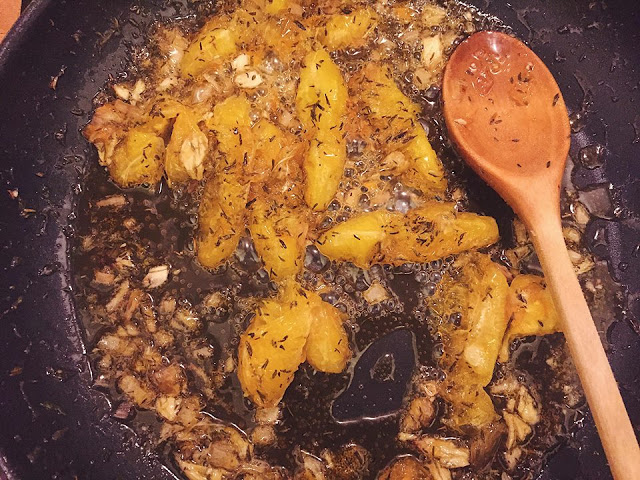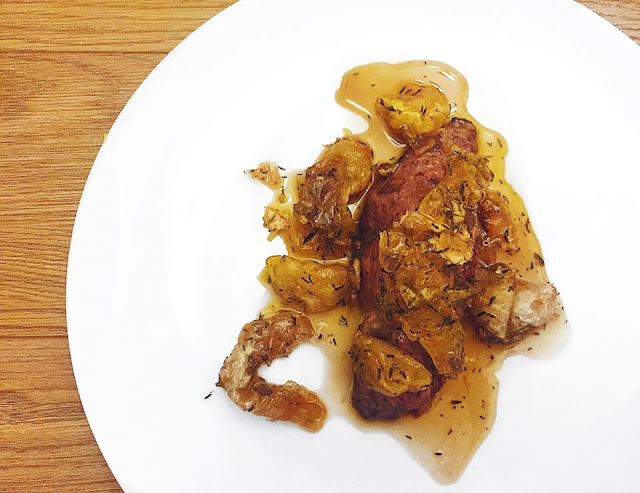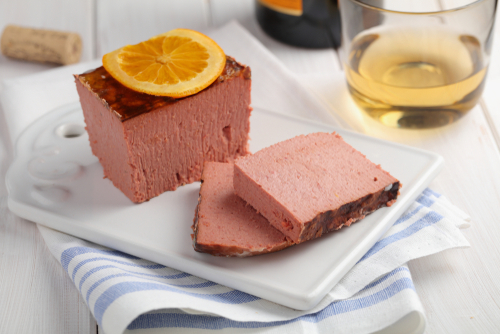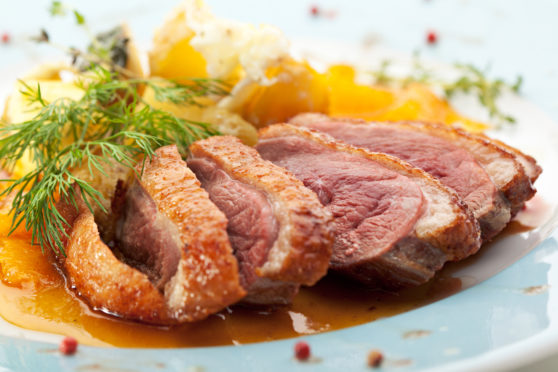This week in our Throwback Thursday series Julia Bryce takes a look back at the popularity of a French classic and shares a brilliant recipe for how to make it.
Made popular in Britain in the Sixties thanks to Julia Child publishing her cookbook Mastering the Art of French Cooking in 1961, duck a l’orange is one of those dishes almost everyone at some point in their life has tried.
Known as canard a l’orange in France, this classic is a sweet yet sour dish featuring roasted duck breast accompanied with a fragrant orange sauce.

While many food historians report that it originates from Tuscany in Italy and was known as paparo alla Melarancia, some say it travelled from Tuscany to France when Catherine de Medici married Henry II of France.
Others will argue the recipe for this fragrant dish hails from the Middle East where they regularly cook fruit with a variety of meats.
While oranges themselves didn’t take off in France until the 17th Century, it wasn’t until the 19th Century the first recipe of duck with oranges was produced.
A trendy 20th Century meal, duck a l’orange has proven timeless and still to this day features on top restaurant menus across the globe.
Duck a L’Orange
(Serves 2)

Ingredients
- 120ml honey
- 2 large oranges (1 peeled and separated into segments and 1 for juicing)
- 2 shallots, finely chopped
- 2 duck breasts seasoned with salt and pepper
- 1 small handful of thyme, chopped
- 2 cloves of garlic, finely chopped
- 2 tbsp of orange zest
Method
- Pre-heat the oven to 180°C (fan).
- Score the skin of the duck breasts and lightly season with salt and pepper.
- Peel one of the oranges and separate the segments of it. Zest the second orange and cut it in half – juice both halves of the orange into a cup.
- Cook the duck on the side with the skin on in a pan on a low-medium heat until the skin is crisp and the duck is cooked (around five minutes). Flip over and seal the duck (30 seconds to one minute).
- Put the duck in the oven (skin side up) on a baking tray for around 15 minutes, or until cooked through.
- While the duck is cooking, prepare the sauce.
- Place the squeezed orange juice, honey, orange zest, shallots and thyme in a pan. Once simmering, add the orange segments and continue to simmer until sticky.
- Remove the duck from the oven and glaze some of the sauce over the skin. Place back in the oven for two minutes to crisp up more. Take out of the oven and allow the duck breasts to rest for five minutes.
- Bring the sauce back up to heat and place the duck breasts on a plate – serve the sauce on top of the duck. Serve with rice, potatoes or other vegetables.
Recipe with a twist
Duck and Orange Pate
(Serves 6-8 depending on portions)

Ingredients
- 450g duck livers
- 1 orange, juiced and the zest
- 1 large white onion, chopped (or 2 shallots)
- 2 cloves garlic, finely chopped
- Knob of butter
- Salt and ground black pepper, to taste
- Optional: 250g salted butter (melt down to clarify and pour on top of made pate)
Method
- Put a bit of butter in a hot pan and fry a little. Add the duck livers and fry until lightly browned.
- Place in a food processor.
- In the same pan, add the onion, garlic, a touch of black pepper, the orange juice and zest, and cook. Add the rest of the ingredients into the food processor when cooked.
- Blitz together until the mixture becomes a fine paste. Add salt and pepper to season.
- Once cool, place into ramekins (or one big container) and put in the fridge to set. Serve within 48 hours. If you plan on keeping the pate more than 48 hours, cover with clarified butter.
Read more from this series…
